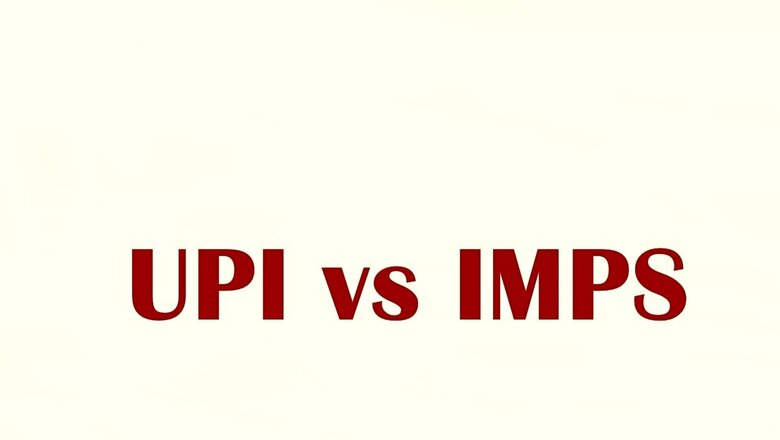
views
In this fast-evolving digital payment landscape, instant and secure money transfers are a necessity. Two popular methods in India, UPI (Unified Payments Interface) and IMPS (Immediate Payment Service), have revolutionised the way people transact. While both offer real-time transfers, they cater to different use cases and offer distinct advantages. Understanding the key differences between UPI and IMPS is essential to make the most of these powerful payment systems.
UPI (Unified Payments Interface) and IMPS (Immediate Payment Service) are both instant payment systems, but they have key differences:
Platform & Interface:
UPI: Operates as a mobile-first system where users can transfer money using unique identifiers like UPI IDs or even phone numbers. UPI supports a wide variety of financial services beyond just sending money, including bill payments, QR code-based transactions, and integrating with third-party apps.
IMPS: Primarily designed for transferring money between bank accounts using details like the recipient’s account number and IFSC code, although mobile numbers can also be used through MMID (Mobile Money Identifier). It functions through bank apps or net banking.
User Experience:
UPI: It is easier and more seamless, especially for peer-to-peer transactions. No need to enter complex details like account numbers or IFSC codes.
IMPS: More formal and often requires detailed information (account number, IFSC, etc.).
Interoperability:
UPI: UPI IDs work across all platforms and banks, meaning that users don’t need to know the bank account number of the recipient.
IMPS: Transfers can only be done to a specific bank account, requiring the bank’s details.
Transaction Limits:
UPI: Typically, there’s a daily transaction limit of ₹1 lakh per transaction (may vary depending on the bank).
IMPS: Daily transaction limits are usually higher, ranging from ₹2 lakhs to ₹5 lakhs (bank-dependent).
Fees:
UPI: UPI transactions are mostly free or come with minimal charges for merchants.
IMPS: IMPS transactions might incur charges, usually small, depending on the bank and transaction amount.
Ecosystem:
UPI: Works within a larger ecosystem of financial services (third-party apps like Google Pay, PhonePe, Paytm).
IMPS: Primarily functions through banking apps or net banking portals.
Adoption:
UPI: Widely adopted, especially for small-scale payments, retail purchases, and person-to-person transfers.
IMPS: Mostly used for inter-bank transfers where the UPI system may not be in use.
UPI provides a more user-friendly and flexible experience for everyday payments, whereas IMPS serves a more traditional banking role for inter-account transfers.


















Comments
0 comment